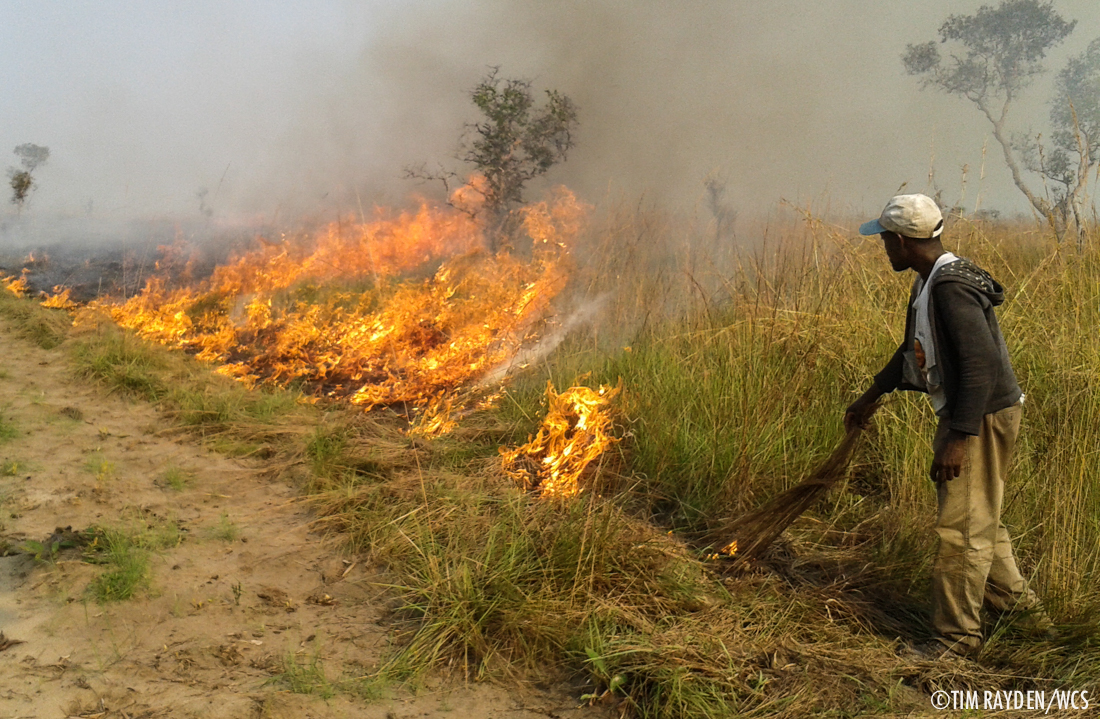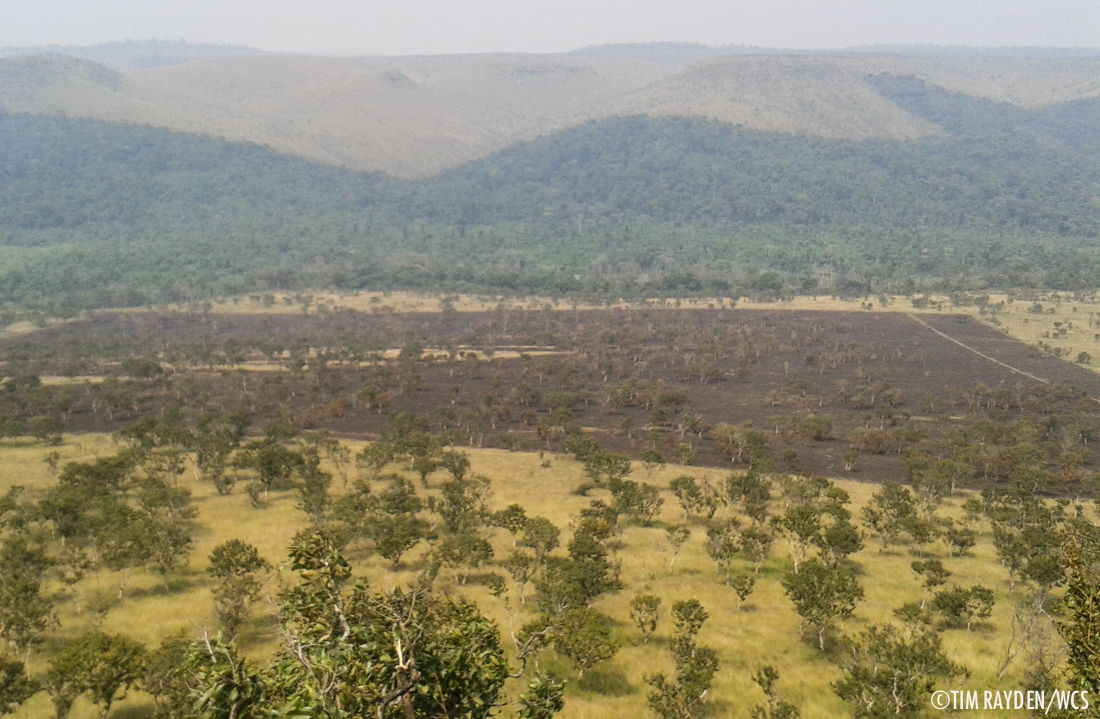
Burn baby burn
Last week a team from the WCS Batéké Project was in the field with a group of fire experts from US Forest Service to look at fire management in the Lefini and Lesio Louna wildlife reserves.
Around one third of Congo’s surface area is covered by savannah. The grassy plateau stretches across the middle of the country from Gabon to the east of Kinshasa Democratic Republic of Congo, and supports a unique mix of animals and birdlife.
The savannah ecosystem itself is unusual, as it spans the equator in a humid tropical climate. Average annual rainfall (around 2000mm) is much higher than other African savannah ecosystems, meaning that the area can support much higher forest cover. However, during the dry season, most of the plateau grasslands are burned. It seems likely that fire prevents forest regeneration and maintains the extent of grassland across the plateau.
”We hope that, with a better understanding of fire dynamics, the use of fire can be organised to maintain high quality grasslands in some areas and allow forest regeneration in others.
Fire has been used by local people for centuries to clear land and facilitate the collecting of grasshoppers, a local dry season delicacy. Traditionally villages managed their savannah lands and prescribed burning during particular periods. But as agricultural activity has expanded, so the use of fire has become less organised.
Late dry-season wildlfires can spread un-controlled for tens of kilometres, and can even burn into forest edges, leading to forest degradation and loss.
In 2014 the USAID CARPE supported Batéké Project initiated a research collaboration with the US Forest Service, The university of Marien Ngoaubi in Brazzaville, and the Univeristy of Edinburgh. The objective of the project was to better understand the impacts of fire on the savannah ecosystem, and in particular, to evaluate how fire may be influencing forest regeneration at the savannah edge.
The project has two research sites, one in the Lefini Wildlife Reserve and one in the Lesio Louna Gorilla Reserve. At each site, different burning regimes are practised, to compare early season burns with late season fires. Data is collected on grassland biomass and the extent of tree growth in response to the different treatments.

The study, which is now in its second year, has provided a wealth of information on fire management and scale-up potential. WCS and USFS are now considering ways in which the lessons learned from the study can be applied within the two wildlife reserves. USFS have initiated a planning process with local communities to better coordinate the use of fire.
We hope that, with a better understanding of fire dynamics, the use of fire can be organised to maintain high quality grasslands in some areas and allow forest regeneration in others. Fire management may also be a way of increasing carbon stocks in the savannah, with potentially important consequences for the role of the Batéké Plateau in the national carbon emissions reduction strategy.


Gwili Gibbon
Hello, has there been any outputs from this study that I could access?